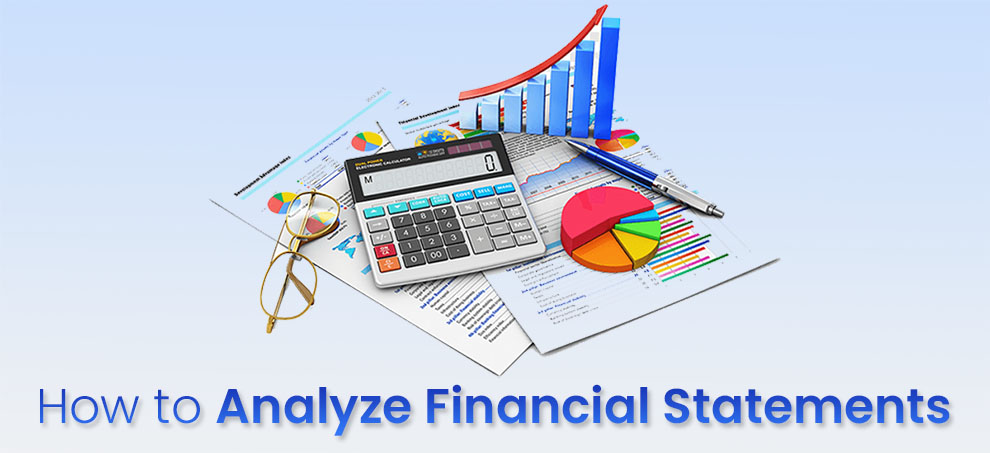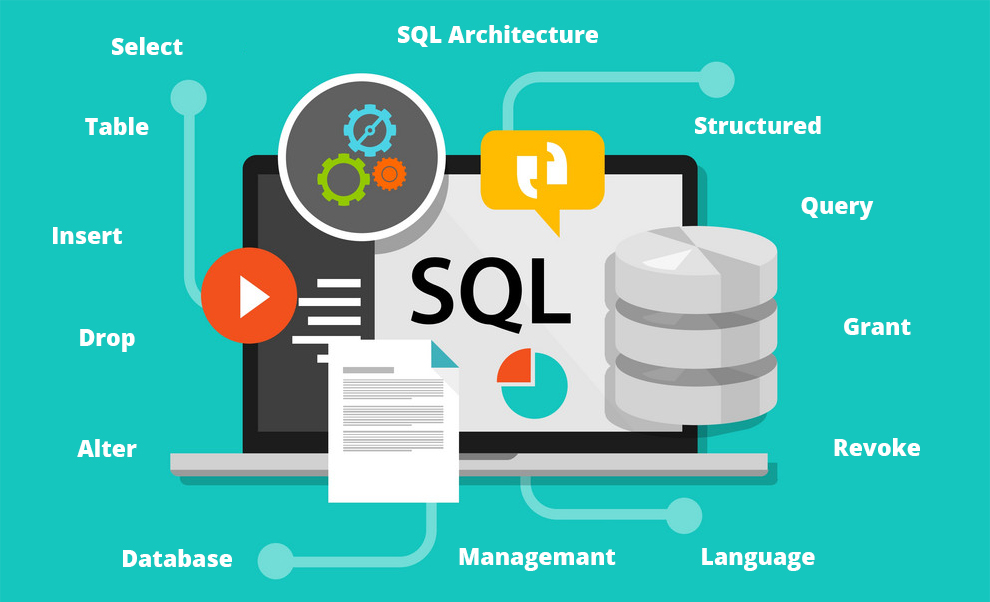What are the financial statements? These statements present the company’s health and well-being. Typically, enterprises compile financial statements annually and quarterly to offer useful financial information to the users. Such reports go for an audit by firms, accountants, government agencies, etc.
Typically, there are three kinds of financial statements:
- The cash flow statement
- The balance sheet
- The income statement
People who know how to analyze financial statements and read them can find ways to maximize profits, save taxes, catch problems early on, and expand their business.
This guide below will discuss several aspects of the financial statements:
- Their types.
- How to read and analyze financial statements?
- Different methods employed in analyzing and interpreting financial statements
- Some of the best books to learn how to read financial statements
Jump To
- Types Of Financial Statements & Understanding Them
- Different Types of Financial Statement Analysis
- Best Book To Understand & Read Financial Statements
- Importance Of Financial Statement Analysis
- Who Uses Financial Statement Analysis Data?
- Frequently Asked Questions
Types Of Financial Statements & Understanding Them
1. Cash flow statement
A cash flow statement accounts for the cash inflow and the outflow over the period. Not every small business owner will maintain a cash flow statement. However, if you follow the accrual accounting method, it is mandatory to have a cash flow statement to keep a tab on the company’s financial health.
Components of the cash flow statement
- Cash from financing
- Cash from investing
- Cash from operations
How to read a cash flow statement?
This section helps you learn to read financial statements. So, as we start, please remember any number in brackets implies subtraction or cash outflows. You have to reduce them from the inflows.
You must know what goes on it for analyzing and interpreting financial statements. So, here are some vital parts of the cash flow statements.
| Cash in hand at the beginning of the period | $1000 |
| A. Cash from operations | |
| Net income of the month | $500 |
| Cash additions | |
| Increase in A/c Payable
Depreciation |
$100
$100 |
| Cash subtraction | |
| Increase in A/c Receivables | ($200) |
| Net Cash From Operations (C) | $500 |
| B. Cash from investing (B) | – |
| Purchase of an equipment (D) | ($300) |
| C. Cash from financing | |
| None | |
| Cash flow for the month (C -D) | $200 |
| Cash at the end of the period | $1200 |
Hopefully, with our example above, you understand how to read cash flow statement. However, we will still give a little brief on every part for analyzing and interpreting financial statements better.
- Firstly, we start with the cash in hand at the beginning of the month.
- Then there is cash inflow from operations, including the net income from the month and the cash additions or the expenses listed on the books but not paid.
- Further, you have the operations outflow, comprising the transactions recorded but not received.
- The difference between the two is the net cash from operating activities.
- Next, we have the cash from investing activities like securities, equipment, or real estate. So, the purchase of assets results in cash outflow. So, subtract it.
- Further, there is cash from financing activities, comprising money earned from the credit, loans, and debts.
- Finally, you can arrive at the cash for the month, which is the cash from operations less cash from investing, plus from financing.
- You can add it to the starting cash balance and get the final balance at month-end.
2. Balance Sheet
Now you know how to read cash flow statements. So, let us learn about analyzing and interpreting financial statements like balance sheets, income statements, and annual reports. Beyond this, you can always refer to some of the best books to learn how to read financial statements. Alternatively, you can also take a course on reading financial statements.
How to read a Balance sheet?
How to analyze financial statements that report the company’s financial worth? Yes, we mean the balance sheets. It showcases the company’s financial position for a stated period. A balance sheet has three parts:
- Assets
- Liabilities and
- Shareholder’s Equity
Assets – Liabilities = Shareholder’s Equity
The short-term assets like accounts receivables and cash imply the enterprise’s operational efficiency. It also tells you what you own. Liabilities comprise the debt capital to be paid off and the expense arrangements. It is the amount you owe to the lenders and vendors. The net of assets and liabilities is the shareholder’s equity or the net worth. It is a book value and works as a vital performance metric.
Broadly, assets include:
- Equipment
- Accounts receivable
- Cash
- Investments
- Inventory
And liabilities include:
- Long-term debt
- Accounts payable
- Loans
- Mortgages
Wish to learn how to read financial statements like Balance Sheet? Below, we will discuss how to analyze financial statements with an example.
Balance Sheet of ABC as of 1st March 2022
| Assets | |
| Cash | $3000 |
| Bank Account | $2000 |
| Accounts Receivables | $10000 |
| Equipment | $50000 |
| Total Assets | $65000 |
| Liabilities | |
| Long-term debt | $10000 |
| Accounts payable | $5000 |
| Total liabilities | $15000 |
| Owner’s Equity | |
| Drawings | ($10,000) |
| Capital | $50000 |
| Retained earnings | $10000 |
| Total Equity | $50,000 |
You need to take an in dept reading financial statements course after this basic guide. Let us understand to read financial statements.
As you can see, there are three parts.
- Assets have everything you have in hand. While some assets are liquid, few are less liquid. Some others, like receivables, are due but not received.
- Liabilities are what you owe. When you less them, you know how much your business is worth. These can be both long-term and short-term.
- Equity is the money owner has put into the company. It is their initial investment, the money required to get the business up and running. Drawing is the money owner pays himself from the company, and the retained earnings are the business’s profit holding.
With that, you know how to analyze financial statements like Balance Sheets. You can also refer to some of the best books to learn how to read financial statements. You can even find a course on reading financial statements for further assistance.
So let us move ahead and discover how to read and analyze financial statements – income statements.
3. Income Statement
Before learning to read financial statements? But, first, understand what an income statement is. An income statement gives a breakup of the company’s revenue against its expenses to reach the bottom line – net loss or profit.
Broadly, it helps measure the company’s operating performance for the period. So, if the balance sheet is the snapshot, the income statement gives a motion picture.
It is the bridge between two consecutive balance sheets. So, where the balance sheet talks about the company’s wealth, the income statement gives an idea of the company’s performance in the last year.
How to read an income statement?
An income statement has three parts. These analyze the business’s efficiency at three different points.
Part 1 – It involves calculating the Gross Profit. So, you start with the revenue and the associated costs to arrive at the Gross Profit.
Part 2 – We find the operating profit by reducing the indirect expenses like general costs, marketing costs, and depreciation.
Part 3 – We arrive at the net income by deducting taxes and interests from the gross profit.
Now, let us check out an example.
Income Statement of ABC Co. as of 1st March, 2022
| Sales Revenue | $10000 |
| Cost of Goods Sold | $2000 |
| Gross Profit | $8000 |
| General Expenses | |
| A. Rent | $1200 |
| B. Office Supplies | $80 |
| C. Utilities | $920 |
| Earnings Before Interest and Tax or Operating Earnings | 5800 |
| Tax | (800) |
| Net Profit | $5000 |
You can read some of the best books on how to read financial statements to help you understand the income statement but below, we will briefly discuss how to analyze financial statements.
- We start with the month’s sales revenue before accounting for any expenses.
- COGS is the money spent to earn the above revenue.
- The difference between the two is the Gross Profit.
- General expenses are the money going towards running the business and making sales.
- Operating earnings is the amount after reducing expenses from the revenue, but before interest or taxes.
- Tax and interest is the expense for the company and has to be debited from the operating earnings, and we finally receive the net profit.
With that, you have learned how to read and analyze financial statements. Another statement is vital to know the company’s financial position – the annual report. Below, we learn about analyzing and interpreting financial statements.
4. Annual Report
An annual report is a publication that the public corporations publish annually to shareholders. It depicts their financial condition and details their operations. It will have an impressive combination of photos, graphics, infographics, narratives, and a letter from the CEO to list the corporate activities, achievements, and benchmarks.
Further, there are also forecasts about the company’s future. It also contains operational and financial information. The annual reports are for the shareholders, employees, and investors and offer an insight into the company’s mission and financial health. You can take a reading financial statements course to learn better.
It will have the following sections:
- Operating and financial highlights
- General corporate information
- Narrative text, graphics, and photos
- Letter from the CEO
- Financial statements, including the balance sheet, income statement, and cash flow statement
- Notes to the financial statements
- Management’s discussion and analysis
- Auditor’s report
- Accounting policies
- Summary of financial data
Different Types of Financial Statement Analysis
Now, you need to know how to analyze financial statements. For this, we employ different types of financial statement analysis. Such techniques help evaluates a company’s value or performance from its financial statements. Below, we will discuss these techniques one by one.
1. Ratio Analysis – How to read and analyze financial statements?
It is a quantitative assessment and provides an insight into the company’s:
- Profitability
- Operational Efficiency
- Liquidity
Several kinds of financial ratios exist, but below we will discuss the five most important ones according to the data sets they offer:
1. Liquidity ratios– It depicts the company’s ability to clear its short-term debts as soon as they are payable.
These include:
A. Cash ratio – Cash percentage for the short-term debts.
B. Quick ratio – Net of inventory and current assets to assess the company’s ability to pay current liabilities.
C. Current ratio – Company’s ability to pay current liabilities
2. Solvency ratios – They showcase the company’s ability to eliminate the long-term debt. These are also known as financial leverage ratios.
These include:
A. Debt to asset – Percentage of assets funded by debt.
B. Debt to equity – Amount of equity that can cover debts.
3. Efficiency ratio,or activity ratio, lets you understand how well the business employs its assets and liabilities to yield sales and produce more profit.
These include:
A. Total asset turnover – A measure of how you use the assets to produce revenue
B. Accounts payable turnover – Analyzes how fast you pay off the creditors.
C. Accounts receivable turnover – Frequency of your accounts receivable collected and paid.
D. Inventory turnover – How often inventory is sold and restocked.
4. Profitability ratio– It reviews if the company is returning profit to amplify shareholders’ wealth. It also checks the profit generated.
These include:
- Return on capital employed
- Gross margin ratio
- Return on equity
- Return on assets
- Profit margin
5. Coverage ratios– show the company’s ability to make interest payments and meet other debt-related obligations.
These include
- Debt-service coverage ratio
- Times interest earned ratio
2. Learn How To Read Financial Statements & Interpret Them With Horizontal Analysis
How to analyze financial statements with horizontal analysis? Let us find out.
It helps compare the historical data like line items, and ratios, over different accounting periods. So, every item in the fiscal period is compared with the same item from another period.
Such analysis can either employ percentage or absolute comparisons, wherein numbers in every following period are listed as the % of the amount in the baseline year, wherein the base amount is 100%.
Experts even refer to it as base-year analysis. There can be a horizontal analysis for a statement of retained earnings, income statement, balance sheet, and schedules for fixed and current assets. You can find analyzing and reading financial statements courses for better clarity on the subject.
Don’t miss out some of the recommended best books on how to read financial statements in the end.
3. Vertical Analysis
It is a method wherein every line item is presented as a measure of the base figure within the statement to achieve a relative significance of the items. It streamlines the comparison process.
- The line items on the balance sheet can be represented as a % of liabilities or assets,
- The line items on the income statement can be stated as the % of gross sales, and
- The cash flow vertical analysis represents outflow or inflow as a % of total inflow.
4. Trend Analysis
It is a simple analysis method to check a company’s standing. Herein, subsequent year’s figures are represented as a percentage of the base-year figures to see if there is a positive change or negative.
5. Comparative Statements
Lastly, this analysis compares the financial statement of two or more periods to see the actual improvement. Take up a course on reading financial statements to get detailed understanding of comparative statements.
Best Book To Learn How To Read Financial Statements
Here are some of our top suggestions:
- Warren Buffett and the Interpretation of Financial Statement written by Mary Buffett and David Clark
- Financial Statement Analysis, written by K.R. Subramanyam, John J. Wild
- The Analysis and Use of Financial Statements, 3rd Edition written by Gerald I. White, Ashwinpaul C. Sondhi, Dov Fried
You can also find an online reading financial statements course.
Why Is It Important To Learn How To Read and Analyze Financial Statements?
Financial statement analysis is beneficial for several reasons.
- It provides the shareholders with vital information regarding company’s health.
- Financial statements help make decisions and formulate policies and plans for the future.
- Creditors use the financial statements to decide whether they want to extend the company’s loan or demand higher rates.
- Investors use the statements to plan their investments in the company.
- It helps understand the company’s profitability.
- It gives an idea of a firm’s long-term and short-term solvency.
- It helps assess the management’s performance.
- It helps with a comparison within the firm and with other firms.
Give a chance to the best books on how to read financial statements mentioned above. You sure will learn a lot from them.
Who Uses Financial Statement Analysis Data?
The below-listed individuals and parties use the financial analysis data:
- Shareholders to ascertain the financial strength and profitability
- Debenture holders to know about the company’s long-term solvency.
- Creditors wish to understand the company’s liquidity.
- Commercial banks and financial institutions want to learn about the company’s profitability.
- Prospective investors want to study the prospects and financial strength of the company.
- Employees and trade unions also want to know about the company’s profitability position.
- Customers use the financial statement analysis to make long-standing contracts with the company.
- Tax authorities who want to know about the company’s profits.
Related: Bookkeeping Courses Online
FAQS: Analyzing and Interpreting Financial Statements
Ques 1. What is the difference between analysis and interpretation of financial statements?
Ans. The primary difference between the two is that analysis involves company’s financial statements’ review and study. In analysis you do the maths, in interpretation you use the math to infer results. Interpretation is also understanding of the financial statements to make the decisions.
Ques 2. What is the best book to learn how to read financial statements?
Ans. Warren Buffett and the Interpretation of Financial Statement, written by Mary Buffett and David Clark, is the best book to learn to read financial statements.
Ques 3. What should I look for when reading a financial report?
Ans. There are multiple things you need to check when reading the financial report:
- Does the company appear financially strong?
- Is the company paying regular dividends?
- Is the year-on-year growth substantial?
- What is the debt-to-equity ratio?
- Is the company making new investments?
Ques 4. What are some common red flags in financial statement analysis?
Some red flags in financial statement analysis are:
- High Debt-Equity Ratio
- Consistently Lowering revenues
- Fluctuating Cash flows
Please watch out for the red flags in the final report data and notes.
Learn how to read financial statements in some simple steps stated above. If you need more guidance on how to analyze financial statements, go pick the best course on reading financial statements from Udemy, Coursera, FutureLearn etc. You won’t be disappointed by their offerings for sure.




